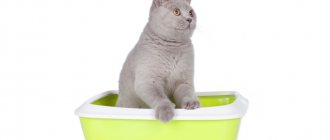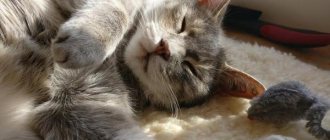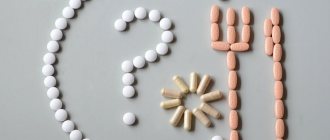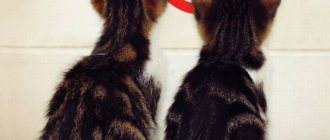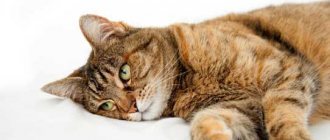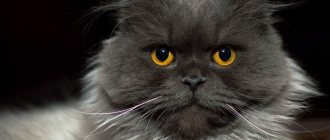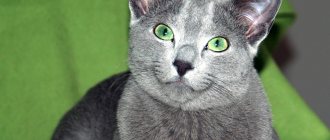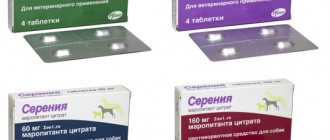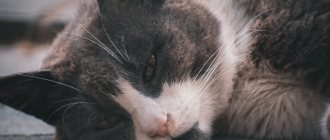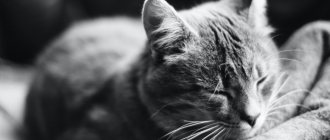IBD is a common diagnosis in cats with chronic gastrointestinal symptoms. This guideline represents clinical change, not least because rational therapy relies on differential diagnosis, and current understanding of the underlying pathogenesis has, to date, hampered the development and development of specific therapy. Dietary manipulation and immunosuppressive therapy remain the mainstays of treatment, but treatment failure is not common. A logical clinical approach and there are a number of alternative and complementary treatment regimens that may be useful in refractory cases.
This article draws on data from human clinical trials, in vivo trials, prospective and retrospective studies in cats with naturally occurring IBD, and clinical experience to discuss testing and treatment choices for cats with idiopathic IBD.
IBD occurs in young, adult, and older cats of both sexes. It is generally accepted that the pathogenesis of IBD is based on loss of mucosal tolerance to intestinal antigens, such as commensal bacteria and food components.
Diagnosis of IBD
IBD is a common diagnosis in adult cats and was recently specifically defined by the WSAVA GI Standards Group. It is believed that the pathogenesis is based on a disorder of the gastrointestinal mucosal immunity (GI) with loss of its tolerance to intestinal antigens, such as commensal bacteria and food components. In addition to this hypothesis, there is evidence that large histocompatibility complex class 2 molecules, which are antigens to the immune system, are activated in the enterocytes of cats with IBD. In addition, the number of bacteria that adhere to the intestinal mucosa of cats with IBD correlates with several pathological features - abnormal duodenal architecture, infiltration of macrophages and T lymphocytes, activation of inflammatory cytokines such as interleukin-8, to the same extent as and clinical symptoms manifested in sick cats. Thus, the goal of IBD therapy is to reduce antigenic stimulation of the intestine and modulate its local immune response.
The first step in rational management of IBD is obtaining a differential diagnosis.
The WSAVA GI Standardization Group defines IBD GI symptoms lasting more than 3 weeks, incomplete response to a trial of diet and anthelmintics, histologic changes consistent with mucosal inflammation on biopsy, and clinical response to immunomodulatory therapy.
Gastrointestinal biopsy
A mucosal biopsy obtained from the stomach or duodenum during endoscopy is a relatively inexpensive and minimally invasive method than laparotomy or laparoscopy. Unfortunately, mucosal biopsies alone may miss lymphoma in cats, especially if only the intestines are involved and not the stomach. In addition, standard GI endoscopy does not allow examination of the jejunum and ileocecal junction. A full-thickness biopsy is obtained at exploratory laparotomy or laparoscopy and is ideal for diagnosing IBD and excluding lymphoma. However, the added cost, hospitalization time, and risk of potential complications can be inhibitory factors for many pet owners.
Ultrasound data
Abdominal ultrasound may be helpful in choosing a biopsy method. Thickened wall or lymphadenopathy of the mesenteric bowel may not be a reliable indicator of most likely IBD and lymphoma, but aspiration biopsy of an enlarged or thickened area of the bowel can be performed to rule out lymphoma. (The absence of a cytological picture of lymphoma does not exclude its presence) Loss of normal layering of the intestinal wall indicates neoplasia, the formation must be removed as quickly as possible, or a biopsy taken through the entire layer if the owners prefer chemotherapy. Gastric lymphoma may have a normal ultrasound appearance, but if the wall of the stomach or duodenum appears thickened or infiltrated, further gastroscopy may be required to confirm the diagnosis. Intestinal adenocarcinoma in cats presents with local thickening of the intestinal wall with mixed echogenicity and should be recommended for removal.
The image shows an abdominal ultrasonogram of a 12-year-old domestic cat with complaints of chronic vomiting progressing to hematemesis. The picture shows a locally thickened duodenum. Subsequent gastroscopy confirmed the diagnosis of T-cell lymphoma.
How does the gastrointestinal tract of cats work?
Food enters the cat's stomach through the esophagus. Food is digested in the stomach. Cats have very acidic stomach juice. This is necessary to break down the meat and bones of the prey. The acidic environment of the stomach fights pathogenic microbes and parasites.
From the stomach, food enters the duodenum. Here the food mass is mixed with bile, which is produced by the liver, and fluid, which is produced by the pancreas. These fluids contain enzymes that break down proteins, carbohydrates and fats, and also neutralize stomach acid.
After this, the food mass passes through the small intestine. The walls of the small intestine absorb nutrients, vitamins and minerals. This way, everything necessary for the cats’ health gets into the bloodstream.
The food mass then enters the large intestine. The body absorbs remaining nutrients and excess fluid. After some time, undigested parts of food are eliminated from the body.
The gastrointestinal microflora helps cats break down food and protect themselves from harmful bacteria. The intestines of cats are inhabited by many beneficial bacteria, which ensure the health of the pets' gastrointestinal tract.
Structure of the gastrointestinal tract of cats
Serum folate and cobalamin concentrations
Serum folate and cobalamin concentrations can often be helpful in biopsy planning. Low folate levels are characteristic of malabsorption in the proximal small intestine. This sign alone, along with the thickened wall of the duodenum 12 on ultrasound, indicates that endoscopy of this area may be sufficient to obtain a biopsy sample. A decrease in serum cobalamin concentration indicates cobalamin malabsorption in the ileum due to either intestinal infiltration or exocrine pancreatic insufficiency.
fTLI and fPLI
Pancreatic insufficiency is rare in cats, but if polyphagia and weight loss are present in euthyroid and nondiabetic cats, trypsin immunoreactivity testing is recommended. If the indicator is normal, pancreatic insufficiency is excluded; in cats with low cobalamin levels, it is recommended to perform a biopsy through all layers of the duodenum, ileum and jejunum. Because pancreatitis may co-occur with IBD, pancreatic lipase immunoreactivity should also be tested as a screening test in cats with chronic GI symptoms, especially if the pancreas appears mottled on ultrasound or if abdominal discomfort is detected on physical examination.
When examining a biopsy, the pathologist should be asked to follow the standards established by the WSAVA GI Standards Group, which include assessment of cellular infiltrate, crypt distortion, villous blunting and fusion, and fibrosis.
Diagnostics
To quickly diagnose the cause of intestinal inflammation in a pet, it is advisable for the owner to collect feces and vomit into clean bags or jars before going to the veterinary clinic. This is necessary so that a specialist can quickly examine them to identify parasites and toxic substances, as well as pathogenic bacteria.
We recommend the article: Why does a lump appear near a cat’s nipple?
In a veterinary clinic, the doctor will examine the cat and palpate the abdominal cavity. Further, if necessary, an ultrasound, x-ray and biopsy will be performed. Blood and urine tests are almost always necessary. If serious disorders in the colon are suspected, a colonoscopy is performed. An accurate diagnosis is made only after a complete examination of the animal.
The primary presumptive diagnosis is determined by the clinical picture and the results of testing for parasites. Treatment is also immediately carried out to eliminate dehydration and support the heart. In case of severe pain, anesthesia is performed using injections of an anesthetic or antispasmodic, depending on the picture.
It is important that the specialist immediately, upon first contact, determines whether the animal has poisoning, viral or bacterial infections, volvulus or intestinal obstruction. This is required, since the listed conditions pose a threat to the life of the cat if urgent treatment measures are not taken. If the condition is particularly severe, then first aid is combined with diagnostics at the same time. This allows you to quickly stabilize the animal and prevent the development of severe complications, including heart failure.
Treatment without biopsy
In IBD, differential diagnosis is impossible without an intestinal biopsy. In some situations, however, a biopsy may not be possible, such as if the owners are financially strapped or if the cat has a contraindication to anesthesia, such as cardiomyopathy or weakness. Unfortunately, long-term clinical symptoms (more than 1 year) do not exclude lymphoma. If a provisional diagnosis of IBD is treated, it is important to ensure that owners do not choose chemotherapy for lymphoma if confirmed and understand that the diagnosis is not confirmed. Even if a biopsy is not possible, it is still recommended to perform an ultrasound of the abdominal cavity, measuring the levels of pancreatic lipase immunoreactivity, folate and icoalamine.
Anatoly Chernikov
Chief veterinarian of the network of veterinary clinics “101 Dalmatians”, graduate of the Moscow State Academy of Veterinary Medicine named after.
K.I. Scriabin (2009). Specialist in the field of dentistry, gastroenterology, endoscopy. Regularly takes part in domestic and international Veterinary Conferences: Moscow International Veterinary Congress, National Veterinary Conference (NVC), Congress of the European Association of Veterinary and Comparative Dietetics (ESVCN), Southern European Veterinary Conference (SEVC), Conference of the International Community Felinological Medicine (ISFM), Conference of the Russian Gastroenterological Academy (RGA), International Veterinary Conference Purina Partners. Colitis (Latin colitis; from Greek kolon - large intestine, and Greek itis - inflammatory process) is inflammation of the large intestine, usually accompanied by a deterioration in the absorption of water and electrolytes, which leads to diarrhea. In addition to diarrhea, colitis in cats can be accompanied by tenesmus, dyschezia, hematochezia, borborygmus, and the appearance of mucus in the feces. Pain and impaired peristalsis can also lead to difficulty in normal bowel movements and impaired peristalsis.
Elimination diet therapy
Diet management is a critical first step in managing a cat with IBD. Although idiopathic IBD is defined in part by an incomplete response to a trial of diet therapy, some cats even with severe inflammatory histology may respond to diet alone. The new protein (elimination) diet is aimed at eliminating the release of proteins to which the immune system of the intestinal mucosa may have already been sensitized. Most commercial elimination diets contain new sources of protein, free of dairy, wheat and corn, highly digestible with moderate amounts of soluble fiber.
An elimination diet should always be considered the first-line treatment for chronic gastrointestinal disease in cats, as it is associated with a high response rate.
Dietary manipulation alone has been shown to be fairly effective in treating chronic gastrointestinal diseases in cats, and avoids the side effects associated with immunosuppressive therapy. In fact, more than 50% of cats with idiopathic GI symptoms responded very well to an elimination diet, either a homemade diet with a novel protein source or one of the many commercial diets (venison and rice).
The first recommendation is to try a diet for the first 4 to 6 weeks, which may surprise some doctors and owners. However, in the above-mentioned elimination diet study, all sensitive cats responded within the first 2 to 3 days, so it may be possible to use the diet for a shorter period of time until symptoms resolve and owners can maintain it (after 1 week, it can be changed).
An alternative to an elimination diet is hydrolyzed food. The goal of these diets (zd or DR) is to minimize the antigenicity of intact food proteins. A hydrolysate diet may be ideal as a “sacrificial diet” during the initial period of therapy, while glucocorticoids are used to avoid sensitization to any previously unused new protein sources. They can also be used as monotherapy in the treatment of IBD. Diarrhea or refusal to consume this diet can be a problem for some cats, and it is also more expensive than other elimination diets. There are still no studies comparing the effectiveness of hydrolysate diets versus diets with a novel protein source.
This image shows a colonoscopy of a cat with chronic colonic diarrhea and peripheral eosinophilia. The photo shows superficial ulcers and thickening. Histology of the mucosa showed severe ulcerative lymphocytic-plasmacytic colitis, the cat responded well to prednisolone in combination with a course of fonbendazole.
Response rates to diet therapy
- Concurrent dermatologic symptoms with chronic GI symptoms may indicate food allergy and increase the likelihood of response to an elimination diet.
- Eosinophilia is an unreliable indicator of response to an elimination diet alone, since it does not take into account the degree and type of mucosal lesions on biopsy.
- Immunoglobulin E testing against food allergens is not indicative of response to an elimination diet and should not be used. They are often false-positive/negative and in most cats IBD is not igE-mediated.
In cats with chronic GI symptoms and the presence of atopic dermatitis, such as this cat with pruritus, a higher likelihood of improvement in GI symptoms is associated with the use of an elimination diet alone.
Conclusions:
Sensitive digestion
is a complex of symptoms that can either accompany a disease or occur idiopathically, that is, without obvious reasons. In this case, the basis of treatment is, first of all, the selection of diet.
If your cat has been diagnosed with a condition that has resulted in symptoms of digestive sensitivity, she will likely be placed on a veterinary diet during treatment. After the condition has normalized, the cat may continue to need a gentle diet, either temporarily or for life. The feed used in this case to feed animals is not medicinal, but can reduce the likelihood of new malfunctions in the digestive system.
General recommendations when selecting food for a cat with sensitive digestion are as follows:
- The list of ingredients included in the food should not be too long, so that in the event of an allergic reaction or food intolerance, it is easier to determine its cause.
- Only high-quality ingredients should be used to feed your cat. High-quality, easily digestible varieties of meat and fish are desirable as the main source of protein. It is best to avoid foods high in vegetable protein, bone meal and other processed by-products. They increase the load on the gastrointestinal tract and have low nutritional value.
- If a cat or cat with sensitive digestion eats food prepared by the owner and digests fermented milk products well, low-fat cottage cheese can be introduced into the diet in small quantities. However, dairy products are never placed in a bowl with meat. It is better not to give milk in its pure form, as it is not digestible by most adult cats and can cause diarrhea.
- Choose cooking ingredients or industrial feeds that do not contain coarse plant fibers or large pieces with sharp edges. Excess fiber and rough, difficult-to-dissolve food pieces can irritate and cause damage to the mucous membranes of the gastrointestinal tract.
- Feeds with a high percentage of moisture are less damaging to the intestines, provide an additional source of fluid and help soften the consistency of the stool.
- Complete industrial food contains all the components necessary for complete nutrition of a cat. When feeding home-cooked food, there may be a need for additional supplements containing additional vitamins, micro- and macroelements. A multivitamin complex suitable for these purposes should be selected in each specific case under the supervision of a veterinarian.
- Food for cats with sensitive digestion should avoid salt, artificial flavors, flavorings and dyes.
These rules can be used as a guide both when choosing a ready-made diet and when preparing food for your cat yourself.
Ready-made diets labeled “for cats with sensitive digestion” are easily digestible dietary foods with increased caloric content, delicate texture and a balanced vitamin and mineral composition. Their use as the main diet helps maintain the health of cats that are predisposed to disorders of the digestive system. With the correct selection of diet and strict adherence to veterinary recommendations, such animals can lead a full life for a long time, maintaining health, physical activity and good coat quality.
Immunosuppressive therapy
In cats with a histological diagnosis of GI disease that do not respond to dietary changes, immunosuppressive therapy is the treatment of choice, although it is hoped that these drugs will be replaced by more specific drugs as the pathogenesis of IBD is better understood.
Prednisolone
Prednisolone is indicated for patients with severe or severe symptoms and a histological picture of lymphocytic-plasmacytic or eosinophilic inflammation. Prednisone is a precursor that is converted to the active form, prednisolone, after administration. This conversion (or perhaps the absorption of prednisone itself) is low in cats, so plasma prednisolone concentrations after prednisone administration are comparatively lower than after oral prednisone. Therefore, prednisolone is preferred for cats requiring glucocorticoid therapy, especially if they respond poorly to prednisone.
The initial recommended dose of prednisolone is anti-inflammatory to immunosuppressive (1 – 3 mg/kg/day). The dose is changed every 3 to 4 weeks to the minimum effective. Glucocorticoid therapy should be combined with a highly digestible diet, ideally novel or hydrolysed protein sources if possible. In cats with severe symptoms of malabsorption, treatment with subcutaneous injections of glucocorticoids early in therapy may improve response. This can be achieved by using dexamethasone, which is prescribed at 1/7 of the dose of prednisolone, which increases the effectiveness of dexamethasone. Dexamethasone has advantages in the treatment of cats with IBD, which often have underlying heart disease, because it does not cause bicarbonate (soda) retention.
Budesonide
Budesonide is an oral glucocorticoid approved for use in people with Crohn's disease. This drug undergoes extensive hepatic clearance (rapidly eliminated) in humans, resulting in lower systemic drug concentrations and a reduced incidence of side effects. The effect of the drug was studied in dogs, in which it caused polyuria and an increase in serum acid phosphatase, like prednisolone. However, it can still be absorbed in concentrations that can suppress adrenal function in dogs.
In our experience, budesonide is effective in some cats with IBD. The drug is supplied as 3 mg enteric capsules and must be refilled to achieve the recommended empirical dose of 0.5 - 0.75 mg/kg/animal per day. Since the extent of intestinal absorption of the drug in cats has not yet been studied, patients should be monitored for side effects of glucocorticoids, such as urinary tract infections and glycosuria.
Chloralbucil
Chloralbucil is an alkylating agent that binds DNA but is less effective than cyclophosphamide. It is effective in combination with prednisolone for nutritional small cell lymphoma in cats, and in cases of refractory IBD. Chloralbucil may be used as an adjunctive drug in the treatment of cats with IBD that respond poorly to diet and glucocorticoids, or in severe lymphocytic GI disease that is histologically very difficult to differentiate from small cell lymphoma. Doses – 2 mg/animal every 48 – 72 hours or 20 mg/m2 as a single dose every 14 days.
Chloralbucil is well tolerated by most cats. It does not cause hemorrhagic cystitis, and although leukopenia is possible, it is rare. It is necessary to conduct a complete blood count when administering the first three doses, when a dosage of 20 mg/m2 is used, and periodically thereafter (once every 2-3 months). One rather rare side effect of the drug, reversible myoclonus, was observed in a cat when the dosage frequency of the drug was not observed.
Cyclosporine
Cyclosporine is an effective immunosuppressant that suppresses T-cell function, namely the production of IL-2. The drug was tested in dogs with IBD, among which it was effective in patients with symptoms resistant to glucocorticoid treatment. Cyclosporine is often effective in cats with refractory IBD at doses of 5 mg/kg once or twice daily. Lack of appetite and vomiting are common side effects, but they disappear when the dose is reduced by 50%. Rarer side effects such as gingival lesions and secondary fungal infections occur in dogs and have not been described in cats, but activation of subclinical latent infections such as toxoplasmosis and herpesvirus is possible.
The comparative effectiveness of cyclosporine versus chloralbucil as second-line therapy in cats with IBD has not been studied.
Probiotics
Probiotics are defined as live microorganisms that aim to maintain microbial balance and have a positive effect on overall health. These are non-pathogenic microorganisms, usually bacteria and sometimes yeast, that can adhere to and colonize the intestinal mucosa; they must be resistant to gastric juice and bile if administered orally. Examples include lactobacilli, bifidobacteria, and enterococcus.
Possible beneficial effects of probiotics include normalizing intestinal flora, inhibiting the growth of pathogenic bacteria, and preventing the penetration of bacteria through the intestinal wall. These effects may be due to a decrease in intestinal pH (lactic and butyric acid) or the release of bactericides. Substances released by these bacteria may also have an anti-inflammatory effect.
There is some evidence of the effectiveness of probiotics in treating people with IBD, although the effect depends on the frequency and dose. Probiotics may reduce the incidence of antibiotic-dependent diarrhea in humans, and may have some effectiveness in maintaining remission in cases of ulcerative colitis. In dogs, they reduce the concentration of clostridia. Under the influence of Lactobacillus, the production of IL-10 and anti-inflammatory cytokines increases. However, in a study of 21 dogs with IBD, there was no benefit from using a probiotic cocktail over a hypoallergenic diet, and this issue needs to be explored more widely.
In a study on healthy cats, administration of lactobacilli reduced clostridia counts and plasma endotoxin concentrations in the short term. A commercial Purina probiotic with this effect caused diarrhea in some cats.
If IBD is indeed caused in part by decreased mucosal tolerance to bacterial flora, then parabiotics may have some benefit. Some commercial veterinary probiotics do not contain viable organisms as stated or are not as described and contain low levels of viable organisms as determined by studies. It is important to use products that contain live bacteria that have been proven to colonize the intestines of cats.
Prebiotics
Prebiotics are non-digestible food components that promote the growth of beneficial bacteria in the intestines. These components are often selectively fermentable short chain hydrocarbons such as beet and psyllium cellulose. Prebiotics are broken down into short chain fatty acids, such as butyric acid, to feed the colonies, which can often reduce the release of pro-inflammatory cytokines. Butyric acid, which can also be administered orally, produces marked improvements in Crohn's disease at colonoscopy, histology, and mucosal cytokine levels in some patients.
There is evidence that the drug is ineffective in cats.
Cobalamin
Low serum cobalamin levels are often observed in cats with GI symptoms, especially those with low body condition scores, although one study from England suggests a low incidence of this phenomenon. Low cobalamin disrupts the normal function of enterocytes, which contributes to the already existing maladsorption in sick cats. It can be caused by malabsorption in the ileum or pancreatic dysfunction (pancreatitis or exocrine insufficiency - the release of bicarbonate in the 12 p.c. is impaired, which connects cobalamin to the binding factor with which it is absorbed in the body).
Macrocytosis is an unreliable indicator of cobalamin deficiency in cats, but has been described. Serum cobalamin should be measured in all cats with confirmed IBD and small bowel diarrhea. Prescribed at a dose of 250 mcg once a week. Treatment results in weight gain, increased appetite, and cessation of vomiting and/or diarrhea in affected cats. Treatment is carried out for 6 weeks until the cause of maladsorption is eliminated.
Metronidazole
Metranidazole is a drug with good antiprotozoal and excellent antianaerobic activity, which is surprisingly effective even alone or in combination with glucocorticoids in the treatment of IBD in cats. It may also have immunomodulatory effects, although these have not been reported at therapeutic dosages.
In cats with IBD, metronidazole is dosed empirically at 15 mg/kg/day. High doses (greater than 58 mg/kg/day) are associated with neurotoxicity in cats, with symptoms ranging from blunted pain sensation to brainstem necrosis. Metronidazole is unpalatable and often causes a decrease in appetite in cats. Metronidazole benzoate is better tolerated in cats, which may be due to both a more pleasant taste and lower plasma concentrations of the drug, which have been studied in humans. Since metronidazole benzoate contains about 60% metronidazole by weight, it should be dosed at 25 mg/kg/day, this dosage is only valid for GI symptoms. Neurotoxicity occurs at a dose of 200 mg/kg/day. In any case, if a cat does not tolerate metronidazole well, benzoate is the drug of choice.
Omega-3 polyunsaturated fatty acids
Another option for additional therapy. It increases the production of leukotrienes, which cause the attraction of neutrophils and pro-inflammatory reactions. Some of them can prevent cytokine-induced intestinal permeability disorders. Effective for increasing the period of remission in Crohn's disease.
Starting doses are the same as in humans. Available in the preparation FIZOL. Doses are selected individually and titrated, since these acids are tasteless and often provoke diarrhea.
How to switch your pet to food for cats with sensitive digestion
Cats usually have fixed eating habits and are quite reluctant to start eating new food. For a healthy animal, it is recommended to change the diet gradually, gradually increasing the proportion of new food in a single portion over 7-10 days. However, if a food allergy or individual intolerance to food components is detected, the pet must be switched to a suitable diet for cats with sensitive digestion immediately, at once. The sooner the allergen or substance that causes intolerance stops entering the body, the faster the cat’s condition will normalize. The correct selection of food can be judged by the reduction and disappearance of symptoms of gastrointestinal tract dysfunction.
A cat receiving food that suits it is active, has a stable appetite, normal body condition, good coat condition and regular bowel movements. By its volume and consistency, you can judge how well and completely the cat absorbs the nutrients contained in the food. With good digestibility of food and normal functioning of the digestive system, cat feces have a brown color, a soft consistency (without excessive dryness and hardness, but not liquid, retaining its shape), and does not contain inclusions of mucus and blood. Its amount should not exceed 25% of the volume of food the cat receives. The larger the volume of feces in relation to the food eaten, the worse the food is digested.
Failed therapy – checklist
Dietary aspects
- the diet should be selected individually for each cat, homemade diets are more preferable for the period of diagnosis, balanced diets are better for long-term use;
- sometimes you have to try several diets;
- the weekly diet should be adequately based on clinical response data in cats with IBD.
Glucocorticoids
- It is better to use prednisolone than prednisone;
- use budesonite if you are concerned about side effects;
- titrate the dose to the desired effect so as not to cause glucosuria;
- Will prednisolone be absorbed? It is worth considering the use of subcutaneous dexamethasone in cases of severe absorption.
Concomitant gastrointestinal diseases
- Are there any concomitant gastrointestinal diseases - cobalamin deficiency, parasites, undiagnosed lymphoma?
Diabetes
- Prolonged weight loss has been associated with new-onset diabetes—diabetes may occur with long-term use of glucocorticoids; ask owners to periodically check glucosuria with test strips.
Hyperthyroidism
- Is prolonged weight loss associated with newly diagnosed hyperthyroidism?
Pancreatitis
- often accompanies IBD in cats;
- diagnosed using ultrasound and IPL;
- Cats with anorexia are treated with subcutaneous fluids and analgesics.
Cholangeohepatitis
- often accompanies IBD in cats;
- diagnosed using an alkaline phosphatase test, ultrasound of the abdomen and liver biopsy;
- bile culture, treatment of infection;
- start treatment with ursodiol
